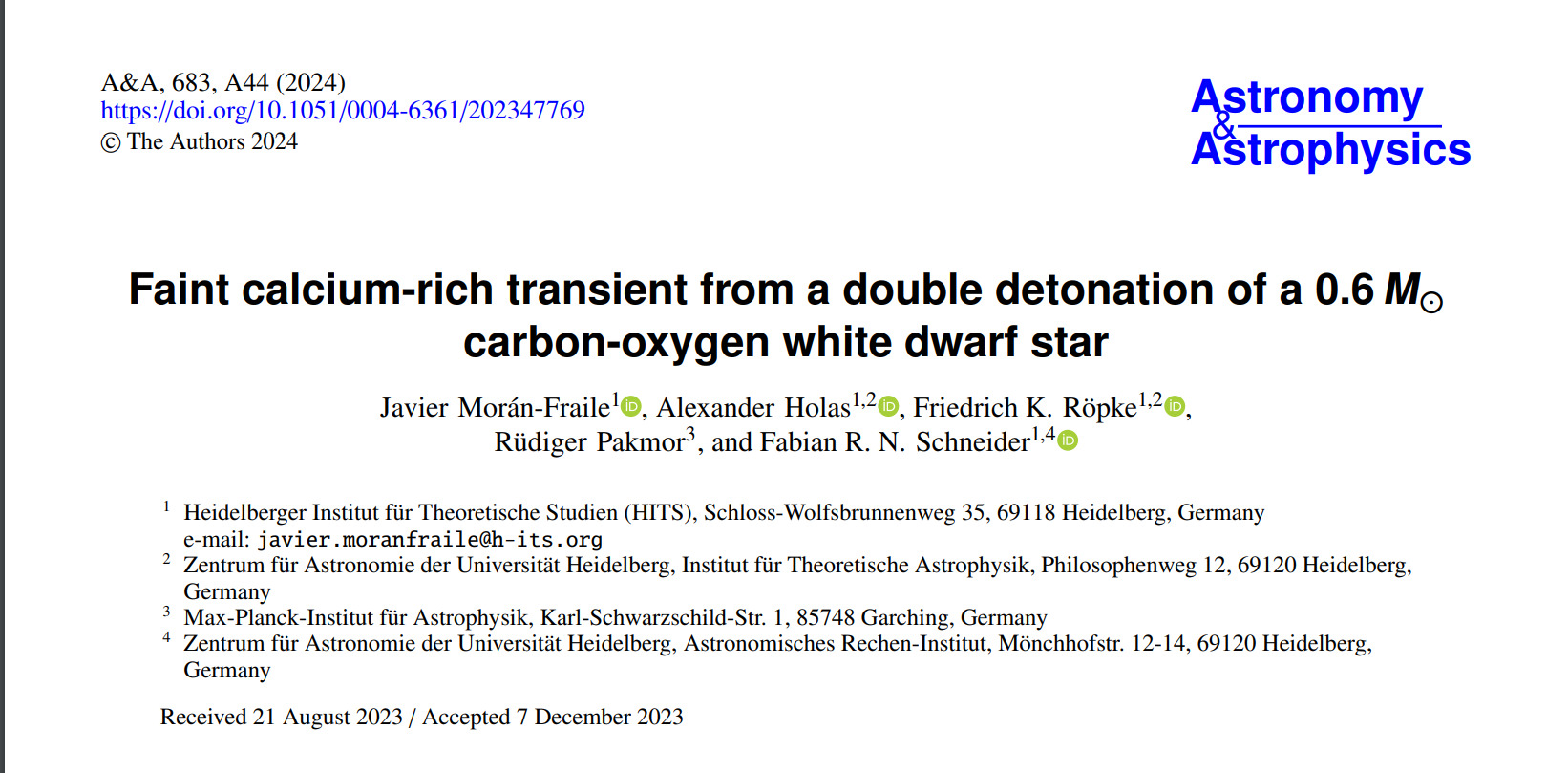Faint calcium-rich transient from a double detonation of a 0.6 M⊙ carbon-oxygen white dwarf star

Authors: Morán-Fraile, Javier; Holas, Alexander; Röpke, Friedrich K.;Pakmor, Rüdiger; Schneider, Fabian R. N.
Abstract:
We have computed a 3D hydrodynamic simulation of the merger between a massive (0.4 M⊙) helium white dwarf (He WD) and a low-mass (0.6 M⊙) carbon-oxygen white dwarf (CO WD). Despite the low mass of the primary, the merger triggers a thermonuclear explosion as a result of a double detonation, producing a faint transient and leaving no remnant behind. This type of event could also take place during common-envelope mergers whenever the companion is a CO WD and the core of the giant star has a sufficiently large He mass. The spectra show strong Ca lines during the first few weeks after the explosion. The explosion only yields < 0.01 M⊙ of 56Ni, resulting in a low-luminosity Type Ia supernova-like light curve that resembles the Ca-rich transients within this broad class of objects, with a peak magnitude of Mbol ≈ −15.7 mag and a rather slow decline rate of Δm15bol ≈ 1.5 mag. Both its light curve shape and spectral appearance resemble the appearance of Ca-rich transients, suggesting such mergers as a possible progenitor scenario for this class of events.
Videos:
Videos can be found at zenodo.
